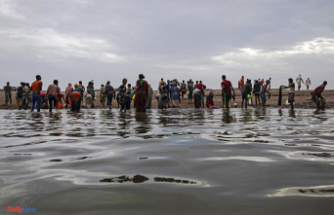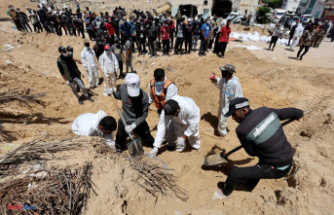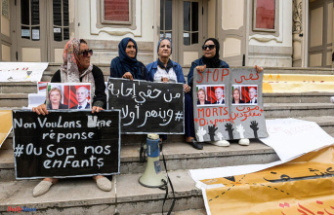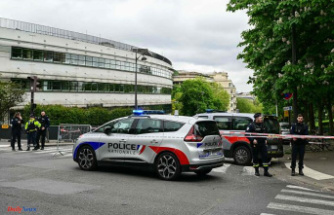In the sunny days, the wavy roof of the Millennium Seed Bank (Millenium Seed Bank) is a distant reflection for passengers who land at the Gatwick airport. There, in that crystalline and futuristic building, a stone's throw from London and ambushed in the hills of Sussex, concentrates the greatest effort to preserve the plant biodiversity of the planet: up to 2,500 million seeds of wild plants, preserved at 20 degrees under Zero and protected in a vault resistant to floods, explosions and radiation.
"It can be said that we are something like the ark of noé plant, although unlike the animals we do not have the seeds by couples but we preserve a good amount and make sure that they are viable and can germinate," warns Elinor Breman, Scientific responsible for the Millenium Seed Bank, distinguished with the World Award for the Conservation of Biodiversity of the BBVA Foundation that will be delivered on Tuesday.
"When we talk about the sixth mass extinction, all the focus is on animals," says Brenan. "The sad reality is that 40% of the plant species are threatened, but that is something we do not usually see in the headlines, we are able to emotionally connect with the animals, but at the same time we live in a kind of" blindness towards The plants ". We continue without recognizing the essential role played in our lives. The plants provide us with oxygen, food, medicine and shelter. All we do for protecting them is little."
Elinor Breman (London, 1975) is very grateful for the recognition of the BBVA Foundation to this semi-cute work of the more than 80 researchers (and 2,000 resorted by the world) who share with it this adventure in the incomparable surroundings of the Royal Botanical Garden of Kew in Wakehurst. "Our work here is to give future options to plants," emphasizes the British scientist, who embarked on the "Noah ark" of seeds in 2013, after its passage through the Long Term Ecology Laboratory of the University of Oxford.
The Millenimum Seed Bank (MSB) turned 20 EN 2020 and the Svalbard Global Seed Bank was ahead of the opening in Norway, consecrated to preserve the global diversity of crops. "Here we dedicate ourselves to the seeds of wild plants, that is the main difference," explains Elinor Breman. "The key to our work is also collaboration with more than 260 organizations and 190 countries. We encourage the existence of local seed banks, and we are left with the 'backup copies'".
More than 40,000 species, the equivalent of 16% of the world's known plants, are "preserved" in the refrigeration chambers from their seeds. The most vulnerable areas to climate change, wild relatives of traditional crops or endemic and threatened species have priority.
In 2005, for example, a land shift led to extinction in its habitat of Abutilon Pitcairnense, an endemic species of the island of Pitcairn in South America. The "security seeds" that were saved in the MSB allowed to save from extinction to the plant. Something similar could have happened after the disappearance of the Nymphaea Thermaram, the smallest nenuaf, in its natural habitat in Rwanda (although this occasion the Gijonés Botanic Carlos Magdalena had already spread the plant in the Tropical Greenhouses of the Kew). " The seed bank is like life insurance for plants, even if they are extinguished at their place of origin, "explains Elinor Breman, which emphasizes how they are well preserved in a state" embryonic "up to 24 species of the island of La Palma. Among them, an endemic and perennial shrub (Cheirolophus Junonianus) that appears in the "red list" of threatened species, with less than 2,000 copies.
"For the news we have, it grows in an area that has not been affected by the eruption of the volcano, but if something like this would have happened, here we keep the seeds to make sure that it does not come to ex-stay and to promote its reintroduction to the case, As we have done in Australia with several species affected by the 2019 fires. The restoration of habitats is another of our tasks, together with the adaptation of agriculture to climate change. "
A variety of wild garlic that is only found in the Spanish Pyrenees, the Allium Pyrenaicum, is another of the examples that you like to quote Elinor Breman: "The Pyrenees are the place of greatest biodiversity of Europe plants and from there we have arrived Many seeds of autochthonous species. Like the rest of the mountainous areas, it is also one of the impact of climate change, as well as coastal areas. "
In the cliffs of our coasts and even on the marshes of our roads, the wildlife of the carrot, Daucus Carota, recognizable by its umbel of white flowers that unfolds in a stem of up to 10 centimeters, under which the root is hidden Napiforme and edible. "Like other wild varieties, it has been able to adapt to very different conditions and from it, more resistant varieties can be achieved, we move towards a world of 9,000 million inhabitants and a lot of agriculture investigation adapted to climate change is necessary to feed to the population".
The invisible bridge between traditional crops and their "wild" relatives is precisely the strong dish of Aragonese researcher Elena Castillo-Lorenzo, who exercises guidance on our visit to Millenium Seed Bank and emphasizes the ties of the institution with Spain. The Botanical Gardens of the Canary Islands, Gijón and Valencia are active members of the network in which the Inia also participates (National Institute of Research and Agrarária Technology).
Elena takes us to the drying room, with the announcement of the recent arrival of seeds Kazakhstan and Switzerland, rubbing with remittances from Georgia, Bostwana, Zambia, Mexico and Dominican Republic: "With the pandemic everything has been complicated by the papers phytosanitary, but before we got 500 seeds almost daily, from a great variety as you can see. Here the seeds are left for four weeks, at a temperature of 15 degrees and with 15% relative humidity, so they can enter into process of latency or dormancy ".
From there they pass the cleaning department, where they are separated from the fruit or leaf litter with which they sometimes arrive, or they are even reduced as in the case of orchids, which possibly have the smallest seeds in the world. The next step is X-ray observation, to discard those that come empty or infected and save only the "viable".
Then go down to the classification department, inside the vault in the basement, and there are identified and received a code. "This is like the library of the seeds, only that at twenty degrees below zero," explains Elena Castillo-Lorenzo, before opening one of the refrigerated chambers where the ink of the pen is instantly frozen.The seeds, ordered in boats of Crystal or hermetically sealed in laminated containers, seem here treasures encapsulated in a spacecraft. Dresses almost like astronauts with their thermal monkeys for the cold, researchers perform periodic incursions to check the indicators or renew the collections (which can resist tens of years).
"In the Bank of Svalvard, in Norway, the seeds are kept in black boxes, but here we make a constant follow-up to verify that they are still viable and dedicate an important part to research," explains Elerna, before climbing the laboratory where he is They germinate in an agar solution or to show us the greenhouse where it is experienced with some species.
At this point, Elena introduces us to the intricate world of recalcitrant seeds, which do not survive drying and storage conditions at 20 zero and that are shouting other non-conventional methods. The Millenium Seed Bank has a large department of "cryopreservation" or conservation of seeds in liquid nitrogen at temperatures of up to 190 degrees below zero.
Elinor Breman refers us here to another Spanish researcher, Daniel Ballesteros, from the University of Valencia, who works with the comparative biology team of the Kew and is embarked on a project for "cryopreser" recalcitrant seeds of European forests (oaks, carrascas , COSCOJAS) that until now do not have "backup copies" in the vegetable "Noah ark".
"The seed is the promise of life contained in a small packaging," warns Elinor Breman, with the counterpoint of the autumn frond of Wakehurst. "I would have liked to see a greater prominence to the role of plants at the Glasgow climate summit (COP26), but soon we will have the Biodiversity COP15 and we have to take advantage of the opportunity to convey that message ... just like a painter needs all The colors in your palette, nature is nourished by the variety of life. And the best way to guarantee it is preserving seeds for future generations. "
Elena Castillo-Lorenzo (Teruel, 1987) has a very special role as a researcher in the Millenium Seed Bank Conservation Department: The study of "wild relatives" of traditional crops. "They are species often adapted to environmental factors such as droughts or heat waves, or resistant to pests, which can be very useful to climate change," held the Spanish agricultural technical engineer, who has been working in the Royal Garden. Kew botanist at Wakehurst since 2013.
The passion for the plants comes from a girl, and being working on the largest seed bank of Silvetres species is for her the culmination of a dream. She even arrived with a master's degree in vegetable genetic improvement of the Polytechnic University of Valencia and after the passage of her by the Comav (University Institute for Conservation and Improvement of Valencian Agrodivesity). The doctorate of her in the science of the plants and the environment she completed him between the Kew and the University of Warwick, "studying the biology and ecology of the seeds of wild relatives of cabbage, barley and sunflower".
"I am also very interested in minority crops that are now considered obsolete or that are not competitive, but that they could have characteristics of interest for the improvement of traditional crops," says Elena Castillo-Lorenzo, who remembers how Quinoa was practically unknown out of South America and in a few years he has achieved an implementation around the world.
"The purple carrot or some varieties of tomato that are recovering are other examples of foods that can find a commercial viability," warns the researcher, who has also studied the "wild relatives" of aubergines, sunflowers and even coffee, Always looking at them the keys that may be useful for traditional crops.
Ellen Castillo-Lorenzo likes to emphasize the importance of all plant tissue in ecosystems, from the smallest plant to tallest trees. She for a while she worked in fact in Research with Caribbean palm seeds and was coordinate with conservation and research projects with Native Mexican and Dominican Republic Trees.
Date Of Update: 02 December 2021, 04:23











